'American Horror Story: NYC:' Every Easter Egg Explained
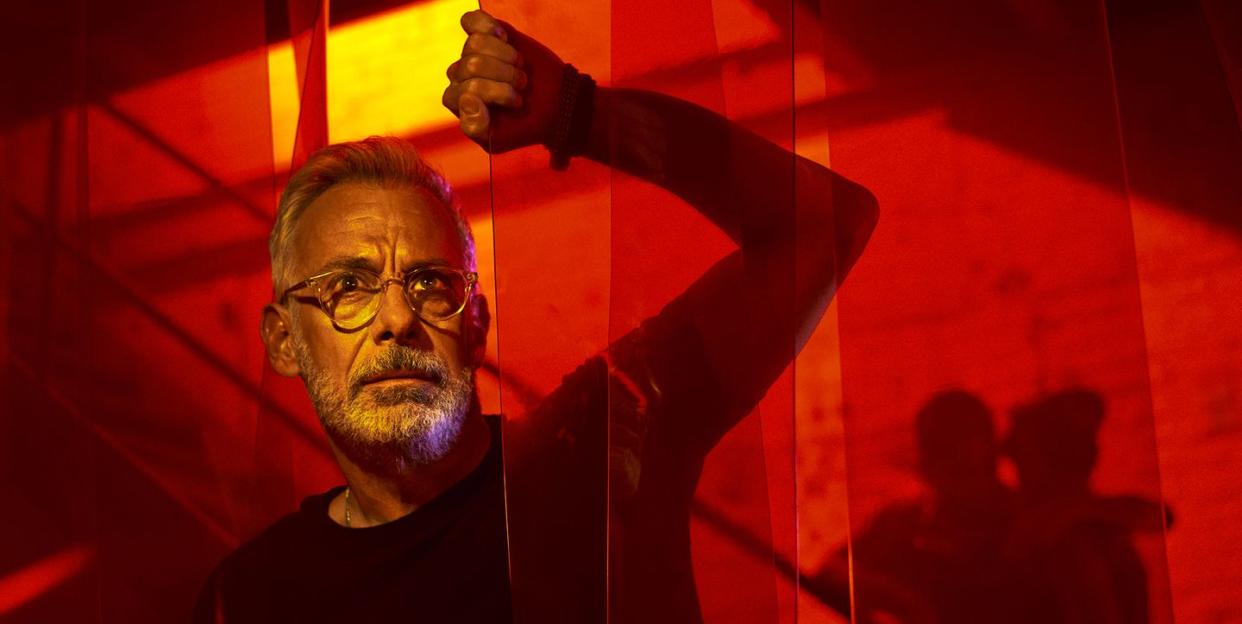
- Oops!Something went wrong.Please try again later.
- Oops!Something went wrong.Please try again later.
- Oops!Something went wrong.Please try again later.
- Oops!Something went wrong.Please try again later.
- Oops!Something went wrong.Please try again later.
- Oops!Something went wrong.Please try again later.
The 11th season of American Horror Story has arrived, and we finally have a sense of just what this installment will be about. Ryan Murphy and the AHS team gave no hints about the plot in the lead-up to the October 19 premiere, revealing only the cast list and the New York City setting. With the two-part opener, fans have learned that the season will cover a mysterious serial killer targeting gay men in Lower Manhattan circa 1981, as well as an unknown illness infecting Fire Island deer, and eventually the LGBTQ community.
Like previous seasons, American Horror Story: NYC pulls subtle and overt inspiration from classic films and real-life serial killers, while also including nods to infamous conspiracy theories. Read on for our running list of all the Easter eggs and references scattered throughout the season.
The Last Call Killer
The main storyline of NYC's two-part premiere focuses on the threat of a leather-clad serial killer known as "Big Daddy," who we see finding his victims at cruising spots including leather bars. While Episode 1 follows Adam (Charlie Carver) as he investigates the killer after his friend is taken, Episode 2 sees reporter Gino (Joe Mantello) kidnapped and tortured by a mild-mannered man named Mr. Whitely (Jeff Hiller). We don't know whether these men are working together or there's two killers plaguing the community, but Mr. Whitely's MO seems very similar to a real-life case in '90s New York.
The case of the Last Call Killer was chronicled in Elon Green's 2021 book Last Call: A True Story of Love, Lust, and Murder in Queer New York. In 2001, Richard Rogers, a gay man and surgical nurse at New York’s Mount Sinai Hospital, was finally arrested for the murders of Thomas Mulcahy and Anthony Marrero in 1992 and 1993, respectively. Both men's bodies were found in New Jersey dismembered and placed into several bags.
Green and authorities suspected that Rogers murdered more men in the same fashion, including victims he picked up in piano bars. However, he was only tried for the two murders, and is currently serving consecutive life sentences at the New Jersey State Prison in Trenton. Green also said in an interview that the NYPD did not pay attention to the murders as they should have, though other jurisdictions were helpful.
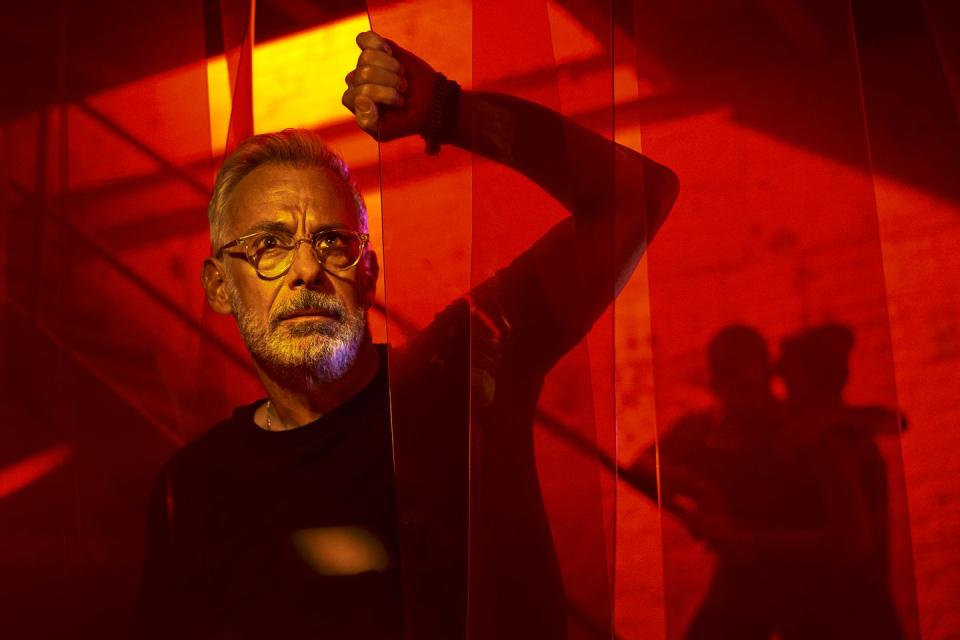
Cruising (1980) and Paul Bateson
Episode 2, "Thank You For Your Service," includes overt nods to this William Friedkin film, which stars Al Pacino and is based on the 1970 novel of the same name. The controversial movie follows a detective (Pacino) as he investigates a serial killer in NYC's leather scene in the late 1970s. It also includes an interrogation scene where the cops call in a large man wearing a jockstrap and a cowboy hat, who slaps the man being questioned and then leaves. Also, if you were extremely confused by AHS's re-creation, Friedkin said in the film commentary that the slap was a real interrogation method that was designed to have others question the victim's credibility if they tried to claim police brutality.
Also, Friedkin was partially inspired to make Cruising due to the story of Paul Bateson, a convicted killer who worked as an extra on the director's 1973 film The Exorcist. Bateson was working as a radiologist when Friedkin observed his medical team as they performed an angiogram. The director saw a large spray of blood during the procedure and decided to put it in the movie, featuring all the members of that medical team as extras.
Years later in 1977, a Variety film reporter named Addison Verrill was found dead in his Greenwich Village apartment, having been beaten and stabbed. After the murder received little attention in the mainstream press, Verrill's friend and Village Voice journalist Arthur Bell wrote a piece calling out the media and the police's apathy toward the murders of gay men. The day after the article went out, Bell received a call where an anonymous man confessed to stabbing and robbing Verrill after a night out. Later that same night, another anonymous caller identified Bateson as the killer, saying that he'd confessed to them as well.
Though he was tried only for Verrill's murder (and sentenced to 20 years to life), Bateson was also suspected for a series of unsolved killings between 1975 and 1977, called the "bag murders," because mutilated and dismembered body parts had been washing up along the Hudson River wrapped in black plastic bags. Though Friedkin claimed in an interview that Bateson confessed to one of the bag murders during a jailhouse visit, there was no direct evidence linking Bateson to the murders.
The HIV/AIDS Epidemic
A significant subplot of the season involves a doctor named Hannah (Billie Lourd), who's researching a mysterious disease that has infected deer on Fire Island. We later learn that some of Hannah's patients have gotten mysterious rashes, and at the end of Episode 2, Fran (Sandra Bernhard) hints that the U.S. government may be behind it all.
The potential epidemic seems to be an analogy for the early days of the AIDS crisis, when the disease was dismissed by the media and government officials as the "gay plague." Lourd's character could possibly be inspired by Dr. Linda Laubenstein, one of the first physicians in the U.S. to recognize the epidemic. Murphy has previously explored this time period is his other work, including the FX series Pose and the TV movie The Normal Heart.
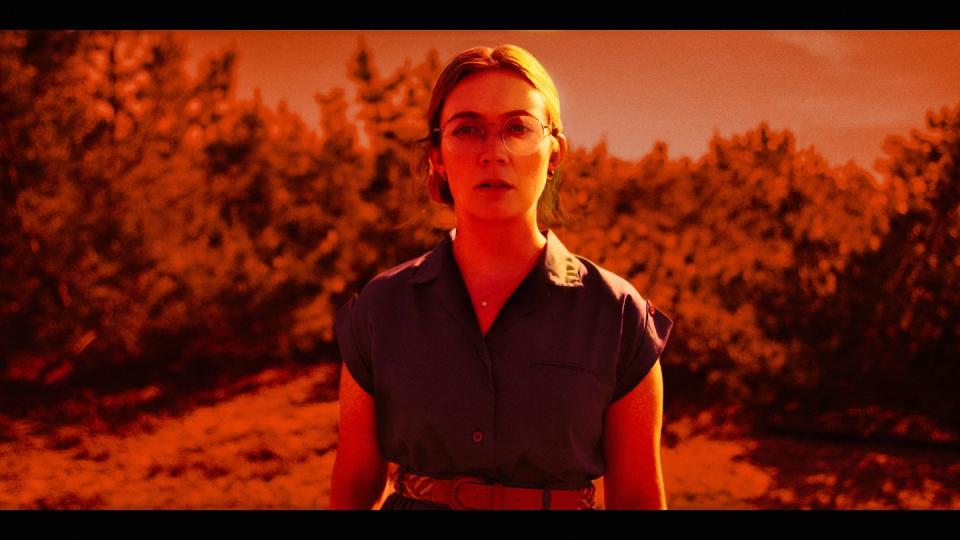
The Native
The newspaper where Gino works is named after the New York Native, a real-life biweekly publication that covered the gay community in NYC between 1980 and 1987. It was the only gay newspaper in the city during the early part of the epidemic, and its medical writer, journalist and physician Lawrence D. Mass, was the first to publish anything in the press about AIDS, in May 1981. The paper eventually drew controversy for publishing conspiracy theories about the disease, with ACT UP even boycotting it in the mid '80s.
Robert Mapplethorpe
One of the many characters we meet in the slow-burn premiere is Theo Graves (Issac Powell), a photographer who has a psychic gift and can feel that "something dark is coming." He has a boyfriend/sugar daddy named Sam (Zachary Quinto, finally back 10 years after Asylum) who finances his art and sells his more perverse photos to high-paying clients. Theo's character could take inspiration from the renowned photographer Robert Mapplethorpe, who drew controversy for his collection of work examining NYC's gay male BDSM subculture in the late '60s, early '70s.
Patti LuPone's Songs
Though we didn't know who the Broadway legend would play this season, there was a near-guarantee she would sing. Lucky for us, Patti LuPone—who's returning nine years after appearing in Coven—shows up as early as Episode 1, playing a singer named Kathy Pizazz who runs the bathhouse several of the season's characters frequent. In her two performances, LuPone sings "Fever" by Peggy Lee and "Calling You" by Holly Cole.
While she didn't appear in "Thank You For Your Service," LuPone's performances add to the show's stellar soundtrack, which is filled with '80s and '90s hits, and reminds me a bit of Pose. Some of the needle drops so far include Blondie's "Call Me," The Cure's "Faith," and Willy DeVille's "Heat of the Moment" (which was on the Cruising soundtrack).
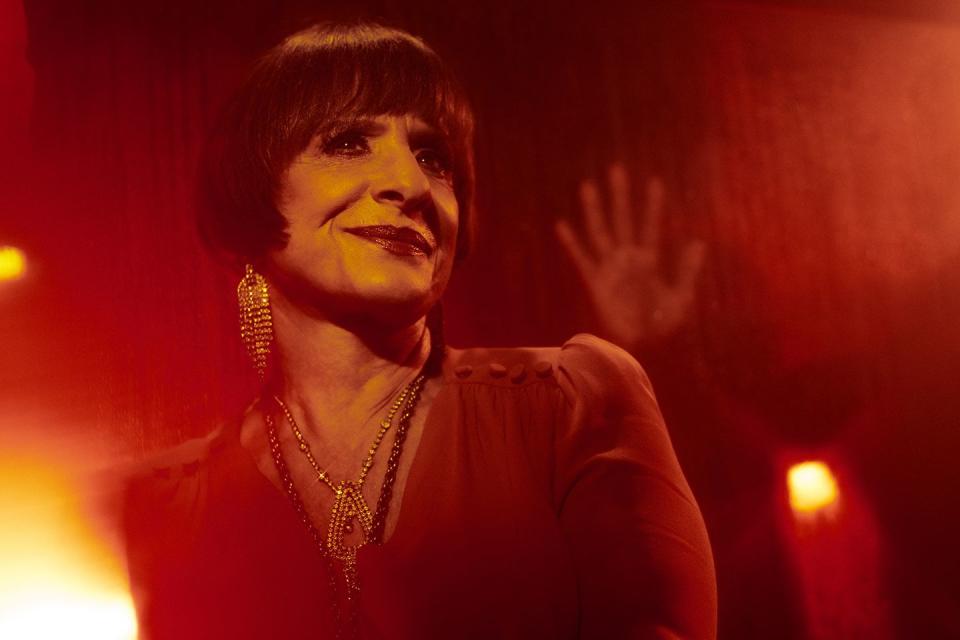
We also have to include a shoutout to Episode 4 and 5's audition performances. The former, the title song from the 1934 musical "Anything Goes," was a loving nod to the Broadway legend's career; her performance in the musical's 1987 revival earned her a Tony nomination. On the other hand, Episode 5 saw a singer practicing Frank Sinatra's "Witchcraft," which is a wink toward LuPone's first AHS appearance playing Joan Ramsey in Coven.
Government experimentation on LGBTQ+ people and Operation Paper Clip
Episode 3, "Smoke Signals," begins with Fran laying out her theory for Hannah, which matches the common conspiracy theory that the CIA knowingly and intentionally injected homosexual and Black communities with the AIDS virus with the intent of harm (the government has actively tried to dispel this theory). In real life, there is one known case where a member of the LGBTQ+ community was experimented on using state funds, one that also served as inspiration for an earlier season of AHS.
In 1970, Robert Galbraith Heath, chair of Tulane University's psychiatry and neurology department, conducted a series of experiments designed to "turn" a gay man straight. The experiment itself was fictionalized in American Horror Story: Asylum through Lana Winters' (Sarah Paulson) time at Briarcliff Manor. Fran's theory also mentions another Asylum Easter egg, Operation Paperclip.
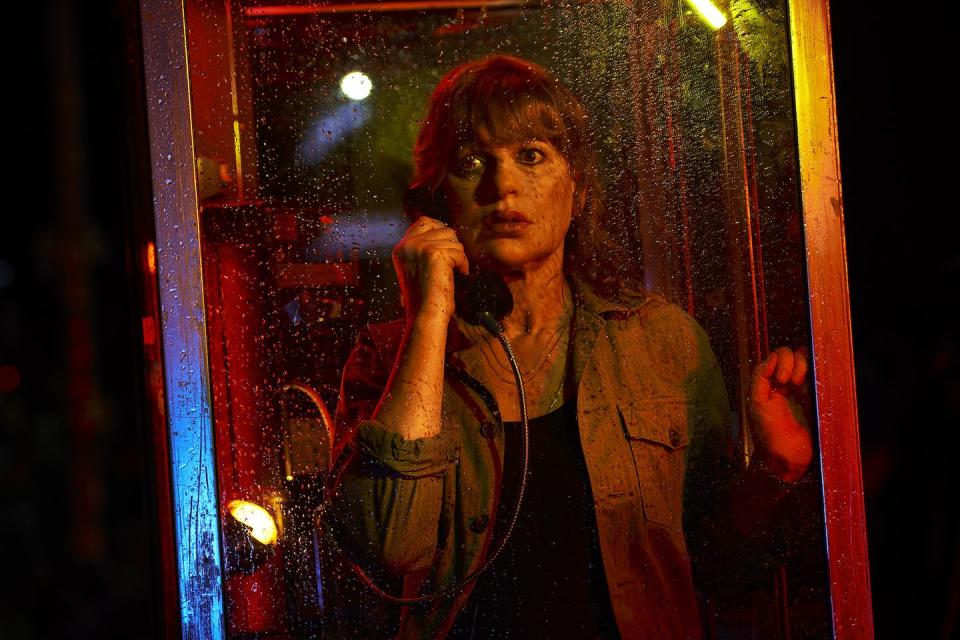
The real-life government program was started by the U.S. and its allies after World War II; the aim was to find and preserve German weapons, and it eventually led to roughly 1,600 German scientists moving to America to work on the country's behalf during the Cold War. It first came up in Episode 5 of Asylum, when Sister Jude (Jessica Lange) hired a Nazi hunter to investigate Dr. Arden (James Cromwell). The full details of the operation are not public, but many of the most well-known recruits, including Wernher von Braun, worked in robotics.
Cat scratch fever
Unfortunately for any hypochondriacs, the disease that Gino has contracted is a real affliction. After he's taken to the hospital with a heart attack, the reporter's diagnosed with cat scratch fever, a bacterial infection contracted from the scratches or bites of cats which can infect the lymph nodes. A recent study found that there were roughly 4.5 cases per 100,000 population over an eight-year span; between the disease's rareness and the fact that Gino doesn't even have a cat, there's definitely something sinister going on.
Also, cat scratch fever is just the latest rare, real-life disease that has been mentioned on the show. The diseases that showed up in Fire Island deer and later in Hannah's patients are identified as Kaposi's sarcoma—a type of cancer that forms in the lining of blood and lymph vessels and causes lesions to grow in the skin, lymph nodes, and internal organs—and Cryptosporidium, a diarrheal disease caused by the protozoan parasite that can be transmitted from hosts to humans. Both Kaposi's sarcoma and cat scratch fever involves afflictions in the lymph nodes, a similarity that could lend credibility to Fran's theory.
The citywide NYC blackout
The final scene of Episode 4 evokes the installment's title, taking place during a citywide blackout. While there is no record of NYC blackouts in the 1980s, the city did undergo an infamous 25-hour blackout in 1977, and there was one murder during the frenzy. Seventeen-year-old Dominick Ciscone was shot and killed in the then-Italian neighborhood of Carroll Gardens, Brooklyn. The cold case was never solved, but two anonymous tipsters did call authorities on the 20th anniversary of his death in 2017.
Star Wars
In Episode 5, "Bad Fortune," there's a moment of levity between doctor Hannah (Billie Lourd) and sweet Adam (Charlie Carver). Earlier in the season, we learned that the duo are friends, and that the fledgling reporter is the biological father of Hannah's unborn baby. During the new scene, as the two walk around NYC, Adam drops to his knees and gives his best Darth Vader impression to Hannah's pregnant belly. The cute moment is a fun nod to Lourd's mother Carrie Fisher, who played Princess Leia in the Star Wars franchise. (Less sweet is the ensuing tarot card reading, after which Hannah dreams that she gives birth to a baby with tentacles, in a callback to Double Feature's second half).
The Angel of Death from Asylum
"Bad Fortune" also includes a huge Easter egg from AHS's second season, as Shachath the Angel of Death returns. While receiving a tarot reading from Kathy Pizazz, reporter Gino keeps receiving the same three cards: Judgement, The Devil, and Death. Eventually, the Angel of Death appears behind Kathy, threatening him as her face is obscured. The figure's return is confirmed in the episode's end credits; though Frances Conroy played Shachath in Asylum, the actor doesn't reprise her role (though she could show up later in the season).
Dressed to Kill (1980)
Barbara meets her end in "Bad Fortune," dying in a shower scene that includes a homage to Angie Dickinson's shower scene in the Brian de Palma thriller. Earlier in the episode, Patrick's ex-wife insists on returning to her apartment, despite an earlier break-in. The sequence, which is soundtracked by Iggy & The Stooges' "Gimme Danger," cuts between three bathrooms as Patrick shaves, Gino takes a bath, and Barbara is attacked by Big Daddy in the middle of a steamy shower. Patrick then finds her choked to death, with Big Daddy alluding the cop posted outside.
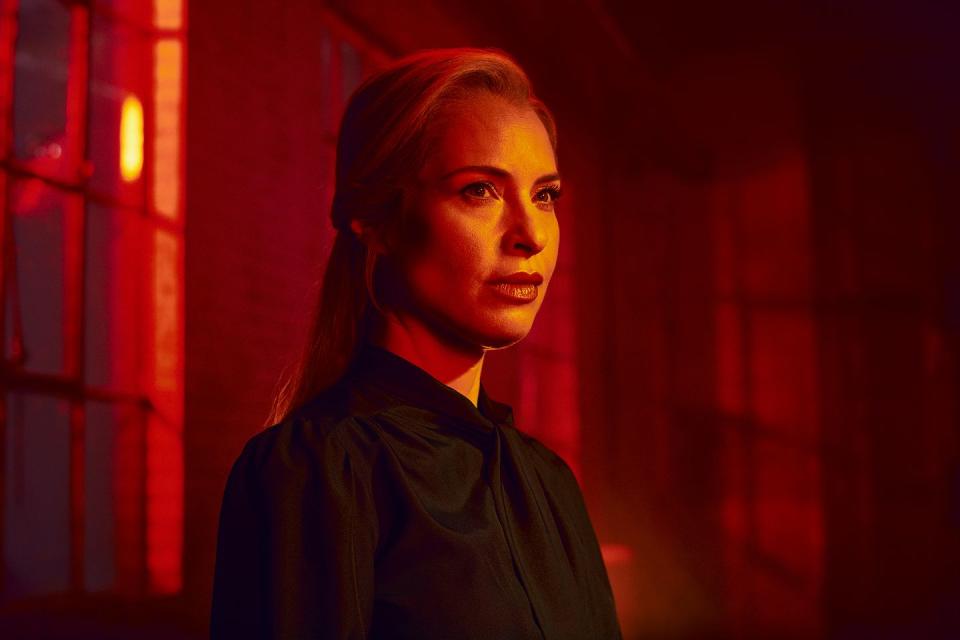
The Velvet Touch (1948)
Early in Episode 6, the aptly-named "The Body," we see a meeting between the mysterious Henry (Denis O'Hare) and a mob member who orders Henry to "disappear" Gino, saying the reporter has written one too many pans about the police. In the scene, we learn that Henry is a fixer who goes by the nickname "Velvet Touch," in a nod to the Jack Gage movie. The film noir follows a Broadway leading lady (Rosalind Russell) who accidentally kills her producer and former lover, and then stays quiet as the police suspect a rival actress.
Sam's possible necrophilia
Episode 6's Fire Island flashback also reveals the homicidal extent of Sam's sexual proclivities. We previously learned that the art dealer likes to keep his hook-ups imprisoned in a dungeon, and he had a similar incident with Detective Patrick (Russell Tovey) and another man named Billy. During the threesome, Billy accidentally suffocated while wearing a gimp mask and chained to a pillory, as Sam and Patrick unknowingly had sex with his dead body. Sam later called Henry to dispose of the body, who enlisted the Mai Tai Killer himself, Whitley.
In addition to confirming that Patrick has crossed some moral lines (another reference to Cruising), the secret connects Zachary Quinto's character to his Asylum role as Dr. Oliver Thredson, aka Bloody Face. In one of his horrific scenes, the killer reveals that he murdered and sexually defiled the corpse of Lana’s (Sarah Paulson) partner, Wendy (Clea DuVall). While we don't know if Sam's encounter with necrophilia was intentional, it's an alarming trait that's now come up twice.
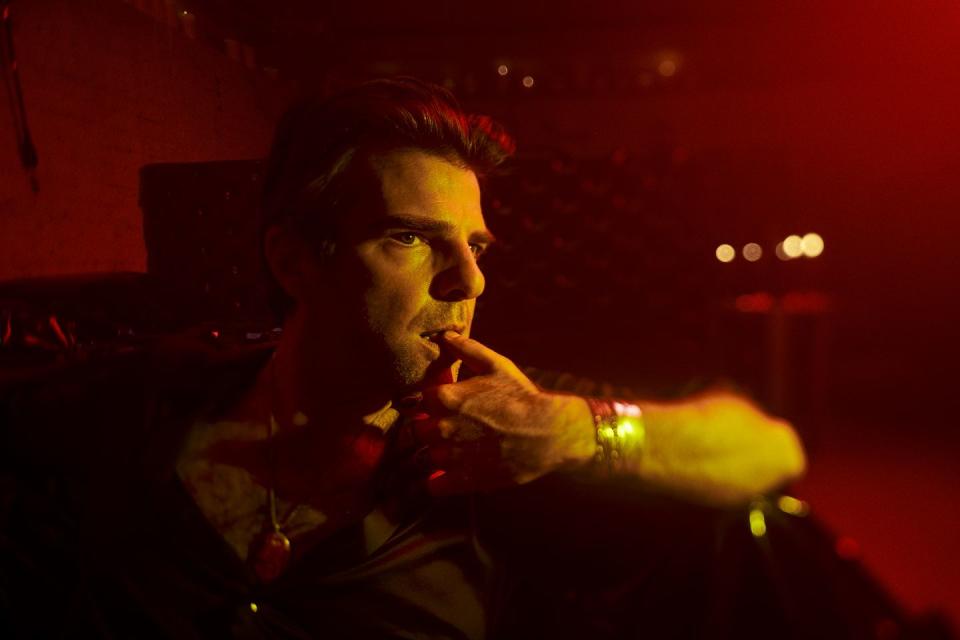
Frankenstein's creation
Episode 7 marks the end of the Mai Tai Killer's reign of terror, as Patrick takes the murderer down while he and Gino rescue Henry. Before he goes, Whitely gives a villain monologue explaining his motives behind his patchwork experimentation on a human body, a la Frankenstein's monster. However, while the mad scientist from Mary Shelley's novel was only after fame and scientific achievement, Whitely wanted The Sentinel to come to life and act as a defender for marginalized communities. We briefly see what could've been during Gino's op-ed vision, as Whitley's vision of a different, twisted future.
The AIDS Crisis and Big Daddy
In the two-part finale, titled "A Requiem: 1981/1987, Parts One and Two," we finally get answers to the show's final two big mysteries. In the first reveal, Big Daddy turns out to be more of a psychological specter following the main characters, as he transforms into a smaller blonde man and a possible ex-lover during Sam's death hallucination. The psychological leanings are a bit confusing, but since the Mai Tai Killer's death, Big Daddy had become intertwined with the show's third villain, the mysterious disease that infected most of the show's characters. That disease takes the forefront of the finale, as it's finally named as AIDS during Patrick's death sequence.
Once the disease is revealed as the real-life affliction, the end of the season unfolds in a similar trajectory as the real-life crisis, with many of the characters slowly dying and many questions remaining unanswered. With the end scenes, AHS: NYC solidifies its theme of presenting an honest, cathartic depiction of the crisis.
You Might Also Like

